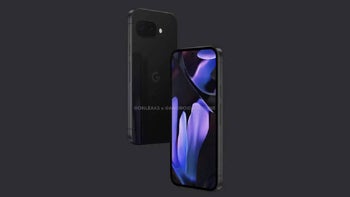Samsung Galaxy Note 4 vs HTC One (M8): first look
Design
Premium materials and stylish build remain the signature features of the HTC One (M8). However, the Samsung Galaxy Note 4 also picks up the pace when it comes to design with its aluminum frame, reminiscent to that of the recently unveiled Galaxy Alpha. And its back is made out of a faux-leather material. Which one of the two is better looking, the M8 or the Note 4? It’s all a matter of personal choice at this point - both are made of premium materials after all.
In terms of pure size, though, there is still a noticeable difference: the Note 4 is much larger, measuring 153mm tall and 78mm wide, while the M8 dimensions are the much more manageable 146.36mm of length and 70.6 of width. The Note 4 is also a hair thinner at 8.5mm thickness, while the M8 measure 9.35mm thick.
Display
The brand new Galaxy Note 4 keeps both the 5.7-inch size and the Super AMOLED technology of the display of its predecessor, which makes it a true phablet. Where there is an upgrade, though, is in resolution: the Note 4 sports a much higher, 1440 x 2560-pixel (Quad HD) resolution.
This AMOLED display provides much higher level of contrast, but we’re yet to see whether it can match the M8 in terms of color accuracy. The HTC One (M8) in comparison features a 5-inch LCD display with a lower, but still great, resolution of 1080 x 1920 pixels. LCD displays stand out with using the full RGB pixel arrangement, while the AMOLED displays usually come with a PenTile matrix with slightly less sub-pixels.
Interface
While both the Galaxy Note 4 and HTC One (M8) run on Android 4.4 KitKat, it’s hard to tell just by looking at them. The Note 4 sports Samsung’s TouchWiz custom user interface, while the M8 gets HTC’s Sense skin. In terms of functionality, Samsung’s skin is just packed, but HTC does not lag much behind. In terms of looks, though, the more colorful TouchWiz UI goes just a bit over the board, with a tendency to look a bit too cartoonish. The Sense skin, on the other hand, has the more mature, polished looks.
Processor and Memory
Performance is an endless game of throw and catch, and the newer Galaxy Note 4 - naturally - has the newer and faster system chip. It runs on the Snapdragon 805 quad-core system chip with the processor clocked at up to 2.7GHz and packs 3GB of RAM on board. The HTC One (M8) on its part features the a bit more dated Snapdragon 801 quad-core system chip with clock speeds running at up to 2.3GHz and 2GB of RAM.
When it comes to internal storage, the Samsung phablet has 32GB of internal storage included in even the basic model. Plus, you can expand on that storage via microSD cards of up to 128GB. Luckily, the HTC One (M8) does not lag behind and offers the same amount of storage: 32GB on board and microSD card support.
Camera
The HTC One series got one thing right - pixel size does matter when taking pictures. However, having just a 4-megapixel (or Ultrapixel) camera is just not sufficient for anything more than just social sharing. That’s why the 16-megapixel front camera on the Galaxy Note 4 looks like an overwhelming advantage. Heck, even the front cam of the Note 4 almost matches the one on the HTC One (M8) in terms of resolution.
And while the M8 does not have optical image stabilization, the Note 4 has now gotten this advantage. Add to that the panorama selfie and other fun options of Samsung’s device, and you have it pulling forward.
Expectations
Finally, with all this in mind, can we pick a favorite? It still depends a lot on which screen size you prefer more: the 5.7” phablet-sized display of the Note 4 with its higher resolution, or the more manageable 5-inch 1080 x 1920-pixel screen.
While the HTC One (M8) has long enjoyed the title of being the best designed Android smartphone with premium style and looks, Samsung seems to have pretty much caught up with a beautifully looking Note 4 with metallic frame and nice finish.
Still, spec geeks will be quick to point out that the Note 4 is the more future proof device, with more powerful hardware, and if you bring the sizable advantage of its 16-megapixel OIS camera, the Note 4 seems to have the edge.














Things that are NOT allowed: